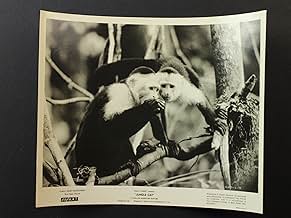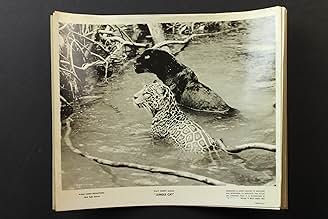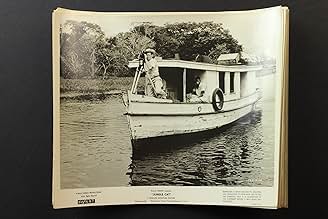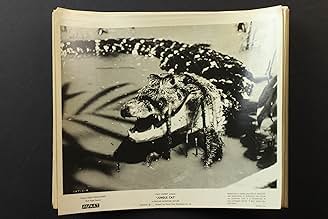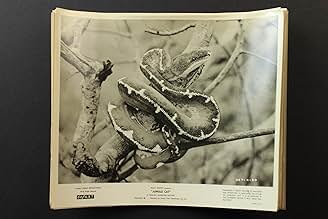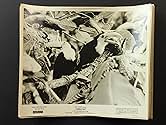AVALIAÇÃO DA IMDb
7,2/10
455
SUA AVALIAÇÃO
Adicionar um enredo no seu idiomaThis documentary chronicles the life of a female spotted jaguar in the South American jungle.This documentary chronicles the life of a female spotted jaguar in the South American jungle.This documentary chronicles the life of a female spotted jaguar in the South American jungle.
- Direção
- Roteirista
- Artista
- Prêmios
- 1 vitória e 1 indicação no total
Winston Hibler
- Narrator
- (narração)
Avaliações em destaque
Very cute, I have recently caught love for these documentaries about the biosphere, here a very fluffy and brasuca example, the Amazon Forest ecosystem, as main characters a beautiful and wonderful Jaguar family, affectionately called cats, we learn from them, about them, and we tasted beautiful images, in love with sloths, a magnificent documented report...
Mainly because of diminishing returns, "Jungle Cat" was the last of Disney's "True-Life" feature length nature documentaries. Though I think another reason for that was that the makers of these movies had pretty much run out of techniques and tricks to really captivate the audience. Don't get me wrong, the documentary does educate, and some of the footage is fairly impressive. But even though the documentary is only seventy minutes in length, it often feels slow and sluggish. The movie seems to be repeating itself over and over. One reason for this may be that there is a significant lack of focus. Though the title of the documentary proclaims it is about the South American jungle cat, the movie keeps jumping back and forth from that subject to focus on other animals in the Brazilian rain forest. It might have worked slightly better had the movie given every focused animal a brief look, then jumped to another animal and not looked back. I realize I seem to be portraying this movie as being really bad. It really isn't; it could have been a lot worse. But all the same it eventually overstays its welcome.
This is the last of Disney's A TRUE-LIFE ADVENTURE Feature. It follows a female jaguar in the Amazon as well as the wild life world she comes in contact with. There's the wild Iguazu Falls before it's over-run by tourists. The sloth is endearing and a real eye-opener back then. The lengthy battle between the jaguar and the anaconda is epic.
This is an old style nature film. Disney has been called out for manipulating footage. Certainly, they humanized the animals to make them relateable. It's an old fashion concept. Old photographs of Civil War battlefields were manipulated as much as these films. It was another era. While one can talk about some of these deficiencies, one also cannot deny the wide-spread appeal of these films and its influence on nature-conservation.
This is an old style nature film. Disney has been called out for manipulating footage. Certainly, they humanized the animals to make them relateable. It's an old fashion concept. Old photographs of Civil War battlefields were manipulated as much as these films. It was another era. While one can talk about some of these deficiencies, one also cannot deny the wide-spread appeal of these films and its influence on nature-conservation.
Here we have another of Disney's wonderful True-Life adventures. This one concentrates on the wildlife of the Amazonian rain forest. It concentrates on the jaguar.
Although the cats are beautiful creatures, I found the slow-motion images of birds more engrossing, particularly the flock of flamingos taking off.
Although the Disney series is often called out for its faked footage and trained animals, they were instrumental in nurturing a love of wildlife in the 1950s and 1960s, and certainly no worse than TV shows like WILD Kingdom, in which Marlon Perkins would tell its audience "While Jim wrestles the tiger, he's a message from Mutual of Omaha." Did their life insurance policies cover mauling by jaguars?
Although the cats are beautiful creatures, I found the slow-motion images of birds more engrossing, particularly the flock of flamingos taking off.
Although the Disney series is often called out for its faked footage and trained animals, they were instrumental in nurturing a love of wildlife in the 1950s and 1960s, and certainly no worse than TV shows like WILD Kingdom, in which Marlon Perkins would tell its audience "While Jim wrestles the tiger, he's a message from Mutual of Omaha." Did their life insurance policies cover mauling by jaguars?
I give it a high rating considering that Disney was a pioneer in nature films as family entertainment. Decades before the Discovery Channel, Disney and his filmmakers were winning awards for these films. Cinematography has come a long way in the ensuing 58 years, but this film captures close ups and action shots of the wildlife without giving the viewer headaches. Just compare anything Disney did in the 40s and 50s to the entertaining 1974 nature film "Animals are Beautiful People". I loved the jokes, but I hated the headache I got from the blurred photography that simply could not keep up with the motion of the animals. Now back to the story.
The film's main focus is a spotted female jaguar living in the South American jungle who chooses a black male jaguar as a mate and produces two cubs - one being identical to dad and one identical to mom. They are portrayed as being a family unit throughout the film, probably to humanize them so people could relate, even though jaguars actually separate after mating.
To supplement the footage of the jaguars, there is a discussion of many of the animals living in this ecosystem including the otter, the capybara ( a rodent), the monkeys - who are vegetarians and live in the treetops - who tease the sloth, and the tapir, which is a favorite prey of the jaguar. It is these other animals who, though fascinating, act as filler for the story of the jungle cat. The finale of the film shows the adult male jaguar in a face off with a giant boa constrictor, and where they fight very definitely determines the outcome of the battle.
I'd recommend this one as it is still entertaining today both in its form and substance.
The film's main focus is a spotted female jaguar living in the South American jungle who chooses a black male jaguar as a mate and produces two cubs - one being identical to dad and one identical to mom. They are portrayed as being a family unit throughout the film, probably to humanize them so people could relate, even though jaguars actually separate after mating.
To supplement the footage of the jaguars, there is a discussion of many of the animals living in this ecosystem including the otter, the capybara ( a rodent), the monkeys - who are vegetarians and live in the treetops - who tease the sloth, and the tapir, which is a favorite prey of the jaguar. It is these other animals who, though fascinating, act as filler for the story of the jungle cat. The finale of the film shows the adult male jaguar in a face off with a giant boa constrictor, and where they fight very definitely determines the outcome of the battle.
I'd recommend this one as it is still entertaining today both in its form and substance.
Você sabia?
- CuriosidadesFourteenth and last installment of the True-Life Adventures series of nature documentaries produced by Walt Disney.
- Erros de gravaçãoThere are actually two snakes in the jaguar battle scene. The female fights with a Boa constrictor and the male with an anaconda, of the genus Eunectes.
- ConexõesEdited into Disneylândia: Man Is His Own Worst Enemy (1962)
Principais escolhas
Faça login para avaliar e ver a lista de recomendações personalizadas
Detalhes
- Data de lançamento
- País de origem
- Central de atendimento oficial
- Idioma
- Também conhecido como
- Jungle Cat
- Locações de filme
- Empresa de produção
- Consulte mais créditos da empresa na IMDbPro
- Tempo de duração1 hora 9 minutos
- Proporção
- 1.75 : 1
Contribua para esta página
Sugerir uma alteração ou adicionar conteúdo ausente

Principal brecha
By what name was O Gato da Floresta (1960) officially released in Canada in English?
Responda
